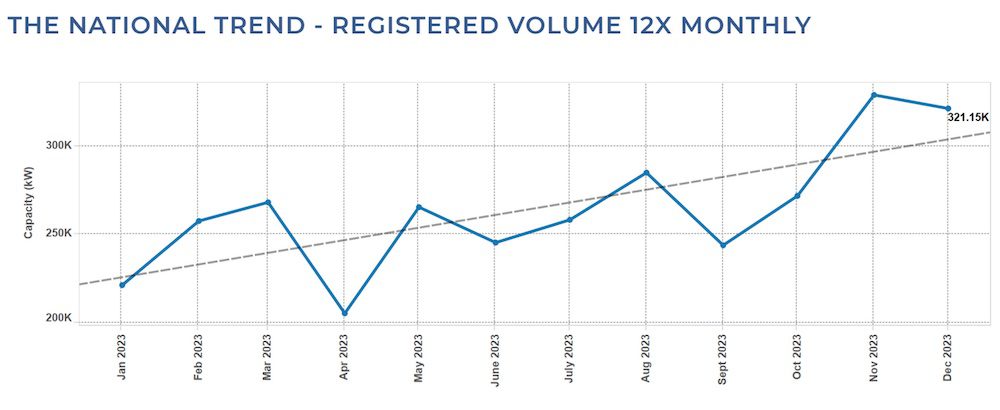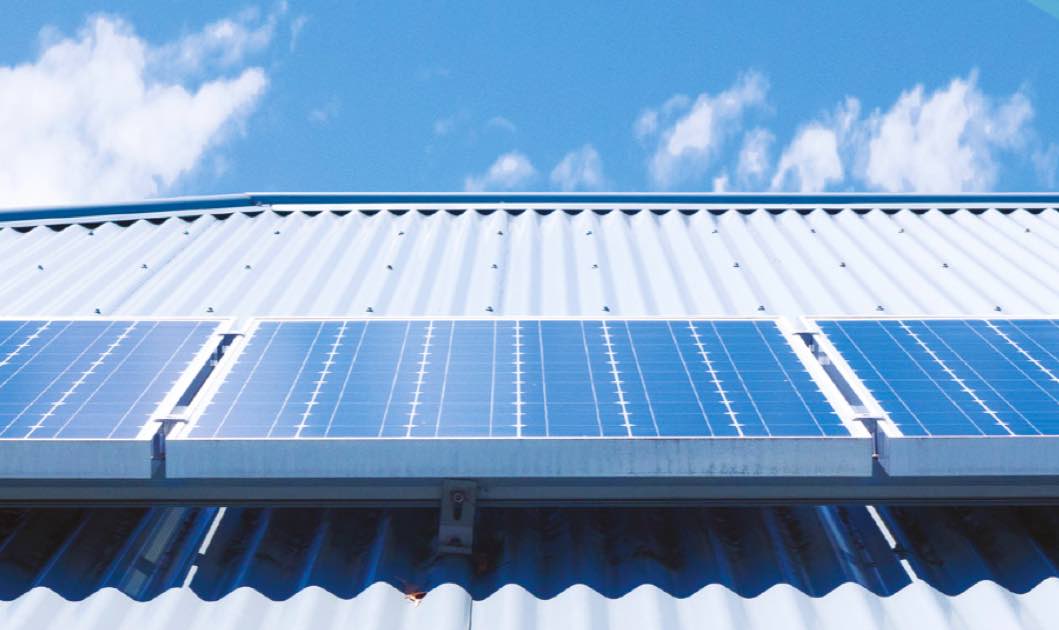In a year of smashing records, Australia’s juggernaut, daytime demand-smashing rooftop solar market fell just short of predictions that it would have its biggest year of growth, yet, in 2023.
“Well that was a let down,” wrote Warwick Johnston in the latest monthly SunWiz market update, explaining that a quieter than usual December meant 2021 would hold on to the title for the most panels installed on rooftops in one year.
In the end, a total of about 3.17GW of small-scale solar was installed on Australian homes and businesses over the course of 2023, a 14% increase on 2022 but behind the 2021 record of just over 3.23GW.

But as let-downs go, that was it. In almost every other way, rooftop solar had a massive year.
As the SunWiz report notes, the “quiet” December of 2023 was also the second-best month on record, with a total of 321MW installed around the country.

The numbers “paint the picture of an across-the-board stable finish,” Johnston says, “disappointing only by comparison to typical end-of-year surges.”
Essentially, Australians are continuing to install PV panels on their rooftops at a world-leading rate, with system sizes getting bigger and bigger – hitting a record high of 10.5kW/system in December.

And the output from all this solar is also through the roof. As Geoff Eldridge reports here, rooftop solar generation records were still being set in the final hours of 2023, when Victoria’s rooftop PV share hit a new high of 65.8% at 12:30pm on Sunday December 31.
At the same time in South Australia, the rooftop PV share on the state’s grid soared to 101.8%, beating the previous record of 101.1% set on a Saturday afternoon in September and marking the second instance where SA’s rooftop PV met the entire region’s demand.
As RenewEconomy reported a month ago – when a stunning leap in rooftop solar output sent renewables through the 20,000 megawatt (20 gigawatt) mark for the first time on the National Electricity Market (NEM), and set a new peak of 20,386 MW at 12.35pm (AEST) – the growing influence of rooftop solar in Australia’s energy mix is significant.
And because it is the consumer rather than the legacy utilities producing this electricity, it is tipping the balance of power, quite literally, away from the incumbent generators.
But it’s causing some rather thorny problems, too. While rooftop solar starving Australia’s legacy coal generators out of the market in the middle of the day, it is also having an impact on utility scale solar and wind.
“Rooftop solar is king but it is subjugating not just coal but also wind and big solar,” writes Victoria Energy Policy Centre’s Bruce Mountain on LinkedIn.
“Vic spot prices were less than -$50/MWh from 6h20am to 17h35 on 31/12: clearly wind and big solar scaled back in response.
“Big paradox here: more (big) [variable renewable energy] is needed to to displace coal, but [rooftop solar] is poisoning its water. Only huge expansion of storage will change this.”
But there’s more to it than that. Calls have been mounting from all sides of the industry for politicians, regulators and businesses to start taking seriously the role of consumer energy – largely rooftop solar at this stage, but growing in scope by the minute – will play in a 100 per cent renewables world.
As UNSW researchers write here, the focus needs to shift to how are we managing “the three challenges of rooftop solar: lack of controllability by the market operator, uncertain behaviour during unexpected grid events and impact on network voltage?”
In November, federal and state energy ministers agreed on the need for a national roadmap for managing customer‑owned energy resources and flagged the possibility of taking a national approach to rules governing assets like rooftop solar, home battery storage and electric vehicles.
“We lead the world in rooftop solar, but we don’t lead the world in managing and regulating that rooftop solar, and the other assets, including batteries and electric vehicles,” said federal energy minister Chris Bowen at the time.
“We want to.”
Bowen said the ministers had agreed to develop a national roadmap for a report back in February. And the pressure is on, with the rooftop solar market showing no signs of slowing down.
“What’s important at this point is not to waste more time in the planning, but to get on with the doing,” said CER export and guest IEEFA contributor Gabriell Kuiper, in November.
“With consumers buying more solar, heat pumps and electric vehicles every day, we need policy and regulation to catch up and leverage these investments for everyone’s benefit,” she says.
And there’s no time to lose, with another big year of growth ahead, according to Johnston.
“The reasons for the build-up (of consumer interest) are electricity prices and cost-of-living pressures,” he told AAP.
“The other driving factor is electric vehicles … because it makes a great deal of sense for them to be powered by cheap electricity.”
The “payback period” for solar is also getting shorter – particularly with no interest loans and other state and federal incentives. Johnston says most rooftop PV systems are paying for themselves in less than five years, which in some states, like Queensland, households are better off financially in as little as three years.
“I expect we’ll have a bigger year this year than we did last year,” he adds.










